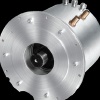Индустриален клъстер "Електромобили" - Учредители:








 |

|

|
| Актуално | За клъстера | Екип | Членове | Документи | Анализи | Услуги | Стани член | Награди | ССЕМ | Контакти |
ИКЕМ - Индустриален клъстер "Електромобили" | Петък, 26.04.2024 | |
|
The 21st Century Electric Car
The electric car, once the “zero-emissions” darling of environmentalists, is sometimes maligned as an “emissions-elsewhere” vehicle, since the electricity to charge its batteries must be generated in electrical generation plants that produce emissions. This is a reasonable point, but we must then ask how much pollution an electric car produces per mile – accounting for all emissions, starting from the gas or oil well where the source fuel is extracted, all the way to the final consumption of electricity by the car’s motor. When we work through the numbers, we find that the electric car is significantly more efficient and pollutes less than all alternatives. In this paper, we will investigate the Tesla Roadster™, which uses commodity lithium-ion batteries instead of lead-acid batteries or nickel-metal-hydride batteries as most electric cars have used. Not only does this lithium-ion–based car have extremely high well-to-wheel energy efficiency and extremely low well-to-wheel emissions, it also has astonishing performance and superior convenience. Lithium ion batteries are a lot more difficult to use than previous technologies; this is the reason that they have not so far been used in electric cars. Tesla Motors is spending a lot of effort making a safe, light, and durable lithium ion battery system. Over time, Tesla will probably put tens of millions into pack and cell features and optimization. However – as this paper will show, the energy and power density of lithium ion batteries make this effort very worthwhile. Energy Efficiency To compute the well-to-wheel energy efficiency of any car, we start with the energy content of the source fuel (e.g. coal, crude oil or natural gas) as it comes from the ground. We then track the energy content of this fuel as it is converted to its final fuel product (e.g. gasoline or electricity), subtracting the energy needed to transport the fuel to the car. Finally, we use the fuel efficiency of the car itself (e.g. its advertised mpg) to complete the equation. All fuels can be described in terms of the energy per unit of mass. In this paper, we will express the energy content of fuels in terms of mega-joules per kilogram (MJ/kg). Well-to-wheel efficiency is then expressed in terms of kilometers driven per mega-joule (km/MJ) of source fuel consumed – a higher number is better.
Gasoline Cars |
Продукти 
Комплектна система за задвижване на електромобилиСистемата за електрозадвижване обхваща гама с три основни типоразмера на ел. мощност със съответните компоненти - електромотор и контролер. oще ...Виж всички продуктиАнкета с продължение...
|
|
|
 ЕВРОПЕЙСКИ СЪЮЗ Европейски фонд за регионално развитие Инвестираме във вашето бъдеще |
 |
 ОПЕРАТИВНА ПРОГРАМА „Развитие на конкурентоспособността на българската икономика” 2007-2013 www.opcompetitiveness.bg |
|
Интернет страницата е създадена с финансовата подкрепа на ЕФРР, в рамките на проект „Развитие на Индустриален Клъстер Електромобили” по ДБФП К-02-2/28.09.2011 г. |
|||